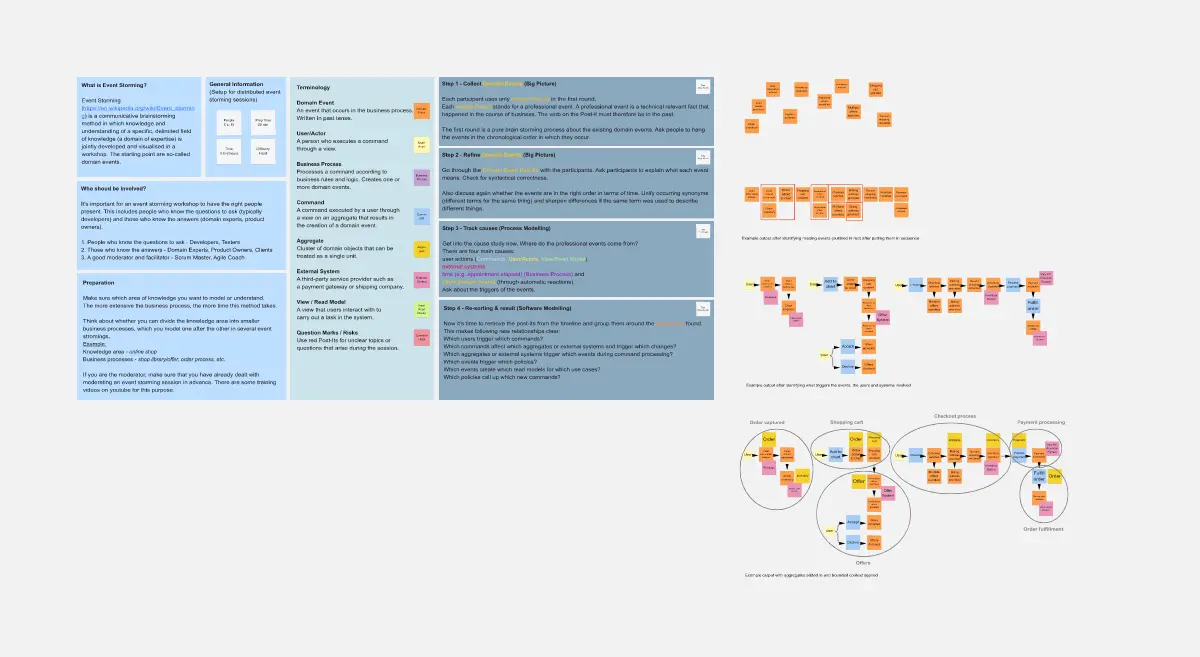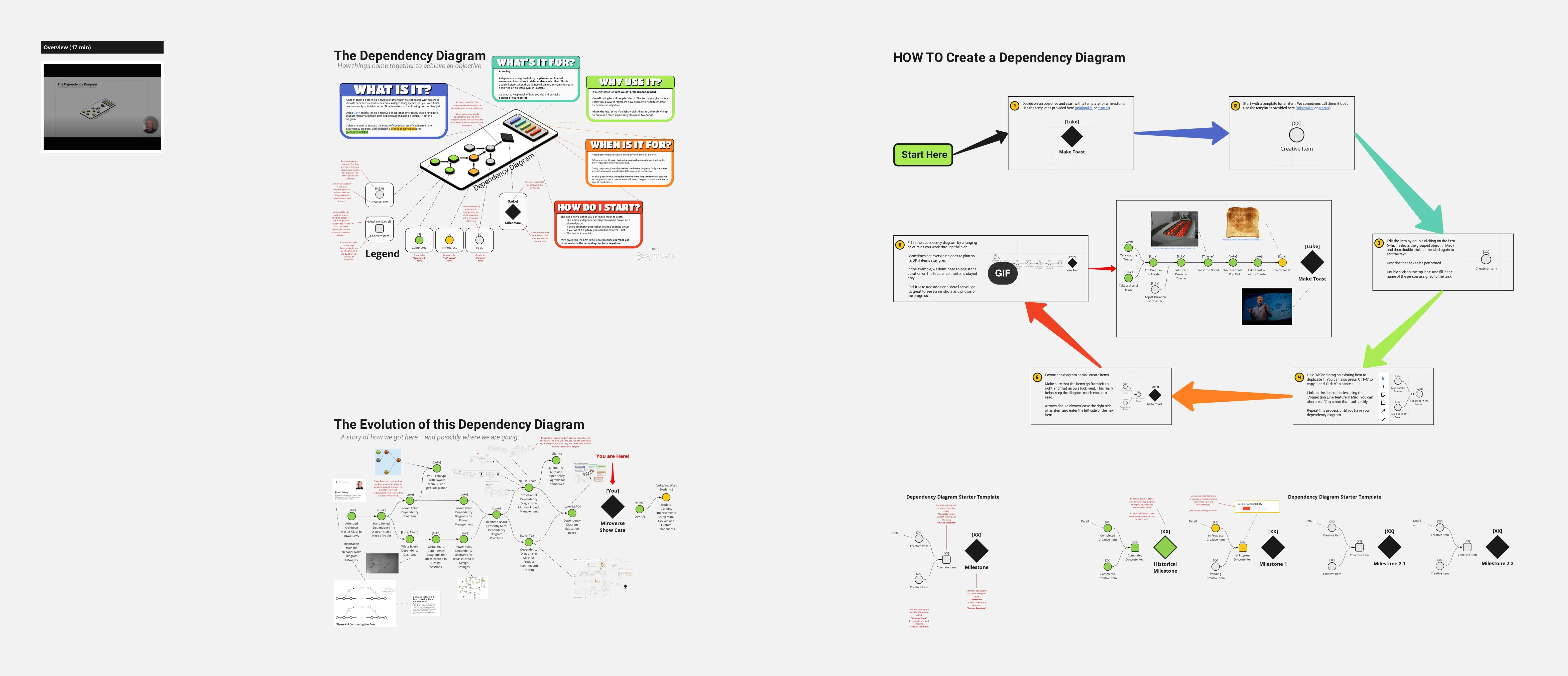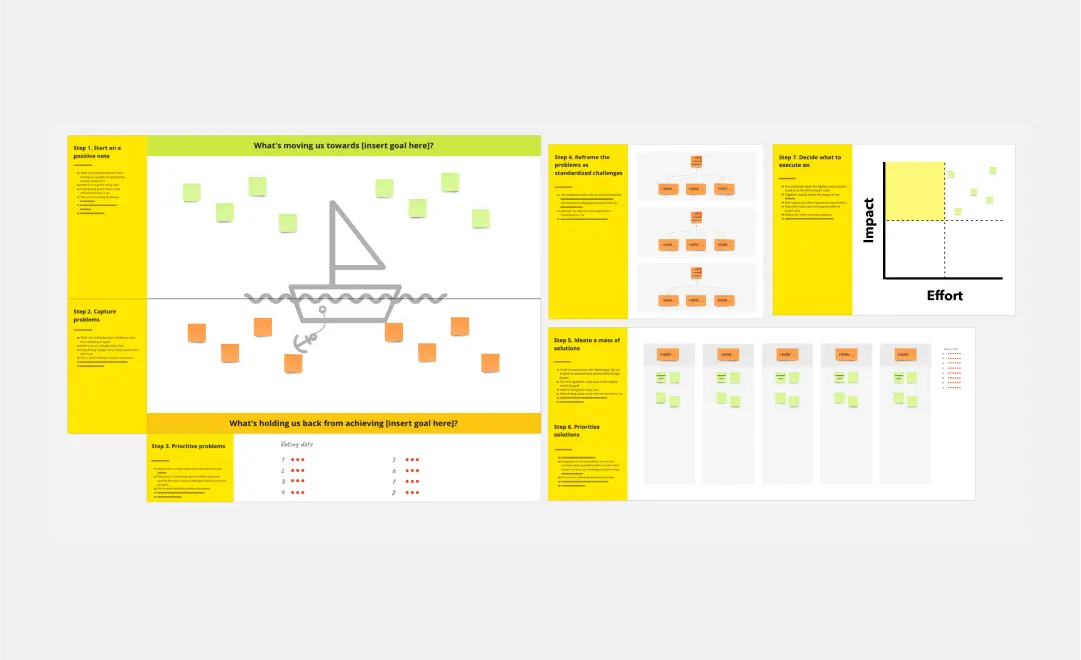Thousands of software engineers around the world use domain-driven design to design model their domains and design software systems. This template allows them to do this remotely with Miro.
The four strategic domain-driven design templates
Core Domain Charts
Map out your domain as a portfolio of capabilities and anticipate how they may change over time. Place a special focus on identifying the core domains, the key areas for business growth. Also show how your architecture aligns with our teams.
Architecture Migration Core Domain Charts
Are you transforming from your current architecture to a target new architecture. This version of the core domain chart helps you to trade-off risk vs value when planning your migration road map or next steps.
Bounded Context Canvas
Bounded Contexts are software sub-systems aligned to parts of the business domain. Bounded Contexts can be implemented as microservices or as modules within a monolith.
Use the Bounded Context Canvas to design an individual Bounded Context by answering the essential the essential design questions in the canvas. Then, use the visualisation to challenge your design - do you have the right boundaries, interfaces, and dependencies?
Domain Message Flowing Modelling
Designing good systems is not just about finding good boundaries and precise names. Designing the interactions between components in a systems, or bounded contexts in Domain-Driven Design, is vital to create loosely-coupled systems, and loosely-coupled teams.
A large design requires many small, but significant decisions. It's important to get the choice of command, event, or query right for every interaction.
Learn more, contribute ideas, and provide feedback at github.com/ddd-crew

Nick Tune
Software Architecture Consultant @ Empathy Software
Software Engineer, Architect, and DDD Enthusiast
Categories
Similar templates
Event Storming

Event Storming
Event Storming is a collaborative workshop technique for exploring complex business problems and modeling solutions. It fosters communication, uncovers dependencies, and aligns stakeholders by visualizing the flow of events in a system. This template empowers teams to map out processes, identify bottlenecks, and iterate towards more efficient solutions, driving continuous improvement and innovation.
Dependency Diagrams Educational Board

Dependency Diagrams Educational Board
The Dependency Diagrams Educational Board template provides a visual tool for teaching and learning about dependency relationships between components in systems. It offers a structured framework for illustrating dependencies, connections, and interactions within a system or process. This template enables educators to explain complex concepts effectively and engage learners in interactive activities. By promoting visual learning and understanding of dependencies, Dependency Diagrams empower students to grasp fundamental principles of systems thinking and analysis.
AJ&Smart's Lightning Decision Jam (LDJ) Workshop
Event Storming

Event Storming
Event Storming is a collaborative workshop technique for exploring complex business problems and modeling solutions. It fosters communication, uncovers dependencies, and aligns stakeholders by visualizing the flow of events in a system. This template empowers teams to map out processes, identify bottlenecks, and iterate towards more efficient solutions, driving continuous improvement and innovation.
Dependency Diagrams Educational Board

Dependency Diagrams Educational Board
The Dependency Diagrams Educational Board template provides a visual tool for teaching and learning about dependency relationships between components in systems. It offers a structured framework for illustrating dependencies, connections, and interactions within a system or process. This template enables educators to explain complex concepts effectively and engage learners in interactive activities. By promoting visual learning and understanding of dependencies, Dependency Diagrams empower students to grasp fundamental principles of systems thinking and analysis.
